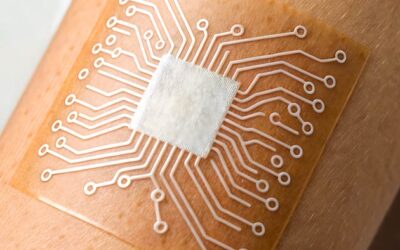by Marty Kotlar, DC, CPCO, CBCS •
President of Target Coding •
Question: Dr. Kotlar, are CPT code modifiers necessary, and do they really help you get paid faster?
Answer: The answers are definitely YES and YES! Federally funded programs such as Medicare require the use of modifiers. Utilizing correct modifiers is crucial to getting your claims paid the correct amount.
Your billing staff should be aware of all the most common modifiers that are used in the chiropractic setting (see samples below). A missing or incorrect modifier can result in a loss of a few dollars to possibly thousands of dollars. On the other hand, an incorrect or missing modifier also can result in overpayment for services. Missing or incorrect coding modifiers are one of the most common reasons that claims are denied. In Texas alone, incorrect or missing modifiers are the second most common reason why Medicare claims are denied.
Modifiers provide the means by which the reporting provider can indicate a service or procedure has been altered by some specific circumstance but has not changed in its definition or code. Modifiers were designed to provide payers with additional information needed to process a claim. Think of a modifier as a communication tool that tells the insurance company that something is different about that particular encounter with the patient. The purpose of a modifier is to allow special consideration for payment. For example, modifier 22 is used when the work required to provide a service is substantially greater than typically required. It may be identified by adding modifier 22 to the usual procedure code. Documentation must support the substantial additional work and the reason for the additional work (e.g., increased intensity, time, technical difficulty of procedure, severity of patient’s condition, physical and mental effort required). In this instance, the only way you’ll get consideration for additional payment is if you use the modifier and have good documentation. This modifier should not be appended to E/M services.
Although modifiers are an important component of proper chiropractic coding, it’s easy to get confused about how to use them correctly. There are dozens of different modifiers, and the rules for using them can be confusing. In addition, modifiers, just like the CPT codes themselves, are constantly changing. Keeping up with correct modifiers is an ongoing process. Modifiers are placed in Box 24D of the CMS-1500 claim form. Below is a list of the most frequently used modifiers by chiropractic offices.
Modifier 25: Significant, Separately Identifiable Evaluation and Management Service by the Same Physician or Other Qualified Health Care Professional on the Same Day of the Procedure or Other Service: It may be necessary to indicate that on the day a procedure or service identified by a CPT code was performed, the patient’s condition required a significant, separately identifiable E/M service above and beyond the other service provided or beyond the usual preoperative and postoperative care associated with the procedure that was performed. A significant, separately identifiable E/M service is defined or substantiated by documentation that satisfies the relevant criteria for the respective E/M service to be reported. The E/M service may be prompted by the symptom or condition for which the procedure and/or service was provided.
As such, different diagnoses are not required for reporting the E/M services on the same date. This circumstance may be reported by adding modifier 25 to the appropriate level of E/M service.
Modifier 59: Distinct Procedural Service: Under certain circumstances, indicating that a procedure or service was distinct or independent from other non-E/M services performed on the same day may be necessary. Modifier 59 is used to identify procedures/services, other than E/M services, that are not normally reported together but are appropriate under the circumstances. Documentation must support a different session, different procedure or surgery, different site or organ system, separate incision/excision, separate lesion, or separate injury (or area of injury in extensive injuries) not ordinarily encountered or performed on the same day by the same individual. However, when another already established modifier is appropriate, it should be used rather than modifier 59. Only if no more descriptive modifier is available, and the use of modifier 59 best explains the circumstances, should modifier 59 be used. Modifier 59 should not be appended to an E/M service.
Following many years to curb the misuse of modifier 59, CMS has issued a Change Request (CR) aimed at addressing the problems with modifier 59. An OIG report found that 40% of modifier 59 claims failed to meet requirements, resulting in an estimated $50 million in overpayments. Modifier 59 is a frequent target of pair audits and has appeared on the OIG’s annual work plan numerous times. Due to the wide variation of circumstances in which 59 can be used, it remains difficult to manage and control by payers. It’s also confusing and frustrating for providers and staff members. Modifier 59 represents extenuating circumstances. It’s one of the rare modifiers that bypass the NCCI edits. As a result, it is a common area of misuse by health care practitioners.
The National Correct Coding Initiative Edits is a system of coding edits that all Medicare carriers utilize nationally. These coding edits are normally referred to as CCI edits. The purpose of the CCI edits is to electronically detect codes that would not normally be used together. The CCI edits created by CMS require that manual therapy techniques (97140), massage therapy (97124), and neuromuscular reeducation (97112) be performed in a separate anatomic region from the chiropractic adjustment. Therefore, attach the 59 modifier to the 97140, 97124, or 97112 to indicate that it is a distinct procedure performed on a different anatomic site than the CMT.
Modifier XS: CMS Transmittal 1442, CR 11168, and MLN 1783722 define 4 additional modifiers – XE, XP, XS, and XU which are subsets of Modifier 59 (Distinct Procedural Services). CMS established these 4 modifiers to provide greater reporting specificity in situations where modifier 59 was previously reported.
-
- XE – Separate Encounter: used to describe services that are separate because they take place during separate encounters.
- XP – Separate Practitioner: used to describe services that are distinct because they are performed by different practitioners.
- XS – Separate Structure: used to describe services that are separate because they are performed on different anatomic organs, structures, or sites.
- XU – Unusual Non-overlapping Service: used to describe services that are distinct because they do not overlap the usual components of the main service.
Modifier GP: Service delivered personally by a physical therapist or under a PT plan of care. Are your claims for modalities and therapeutic procedures getting processed properly? Modalities (e.g., 97012, 97014) and therapeutic procedures (e.g., 97110, 97150) provided by DCs, although non-covered by Medicare Part B, should be submitted with GP if the patient has secondary coverage. The claim will be rejected if submitted without the appropriate modifier, and the financial liability will transfer from the patient to the provider.
Modifier AT: Modifier AT is used for active treatment (this can be acute, chronic, or exacerbation of a chronic condition). Append the AT modifier to spinal CMT codes (98940, 98941, 98942) only. Modifier AT is meant to represent to Medicare that the care was medically necessary (under Medicare guidelines). Modifier AT is not used with maintenance care. Example: 98941-AT.
Modifier GA: Modifier GA notifies Medicare Part B that an Advance Beneficiary Notice (ABN) was signed by the patient, and you have it on file. Modifier GA is used for covered services only (e.g., spinal CMT).
The ABN is the form that is used when a covered service (e.g., 98941) is expected to be denied due to lack of medical necessity. If the treatment of a Medicare Part B patient is maintenance care and, therefore, would be considered not medically necessary and not reimbursable by Medicare Part B, you would have the patient sign an Advance Beneficiary Notice (ABN) and are required to append the GA modifier. If you have some genuine doubt that Medicare will not pay, give the patient the choice to receive the services and offer the patient the ABN form to review. If the patient agrees to pay for maintenance care, have an ABN signed. Submit the claim to Medicare Part B if the patient checks Option #1 on the ABN form.
Modifier GY: Modifier GY is used for all non-payable chiropractic services (services that are statutorily excluded or do not meet the definition of any Medicare benefit). GY is not used on spinal CMT codes. GY is used on all services other than spinal CMT, including x-rays, extra-spinal CMT, modalities, therapeutic procedures, exams, re-exams, etc. Do not use GY on maintenance care spinal CMT. Examples: 99202-GY-25 and 72100-GY.
Modifier 97: Rehabilitative Services. When a service or procedure that may be either habilitative (96) or rehabilitative (97) in nature is provided for rehabilitative purposes, the physician or other qualified healthcare professional may add modifier 97 to the service or procedure code to indicate that the service or procedure code to indicate that the service or procedure provided was rehabilitative. Rehabilitative services help an individual keep, get back, or improve skills and functioning for daily living that have been lost or impaired because the individual was sick, hurt, or disabled. Rehabilitative services help patients restore functions or skills that have been lost. Habilitative services develop skills and functions that had not been developed previously. CMS deleted modifier SZ many years ago in favor of 96 and 97. This allows the payer the ability to differentiate habilitative from rehabilitative services. Example: 97110-97.
Email info@targetcoding.com to receive a FREE Sample SOAP Note with multiple modifiers.
Dr. Marty Kotlar is the President of Target Coding. Over the last 12 years, he has helped hundreds of chiropractors, physical therapists, and acupuncturists with compliance as it relates to billing, coding, documentation, Medicare & HIPAA. Dr. Kotlar is certified in compliance, a certified coding specialist, a contributing author to many coding and compliance journals, and a guest speaker at many state association conventions. He can be reached at 1-800-270-7044, website – www.TargetCoding.com, email – drkotlar@targetcoding.com.










 ▶︎
▶︎  Why is the Discount Challenge prize amount $15,024? Because that is the average “per-occurrence” fine for Medicare inducements. That’s not $15,024 per patient, that’s not per provider, that’s PER VISIT. Stinks, doesn’t it? To us, the prize amount is worth the investment if we can help our profession better understand proper discounting.
Why is the Discount Challenge prize amount $15,024? Because that is the average “per-occurrence” fine for Medicare inducements. That’s not $15,024 per patient, that’s not per provider, that’s PER VISIT. Stinks, doesn’t it? To us, the prize amount is worth the investment if we can help our profession better understand proper discounting.